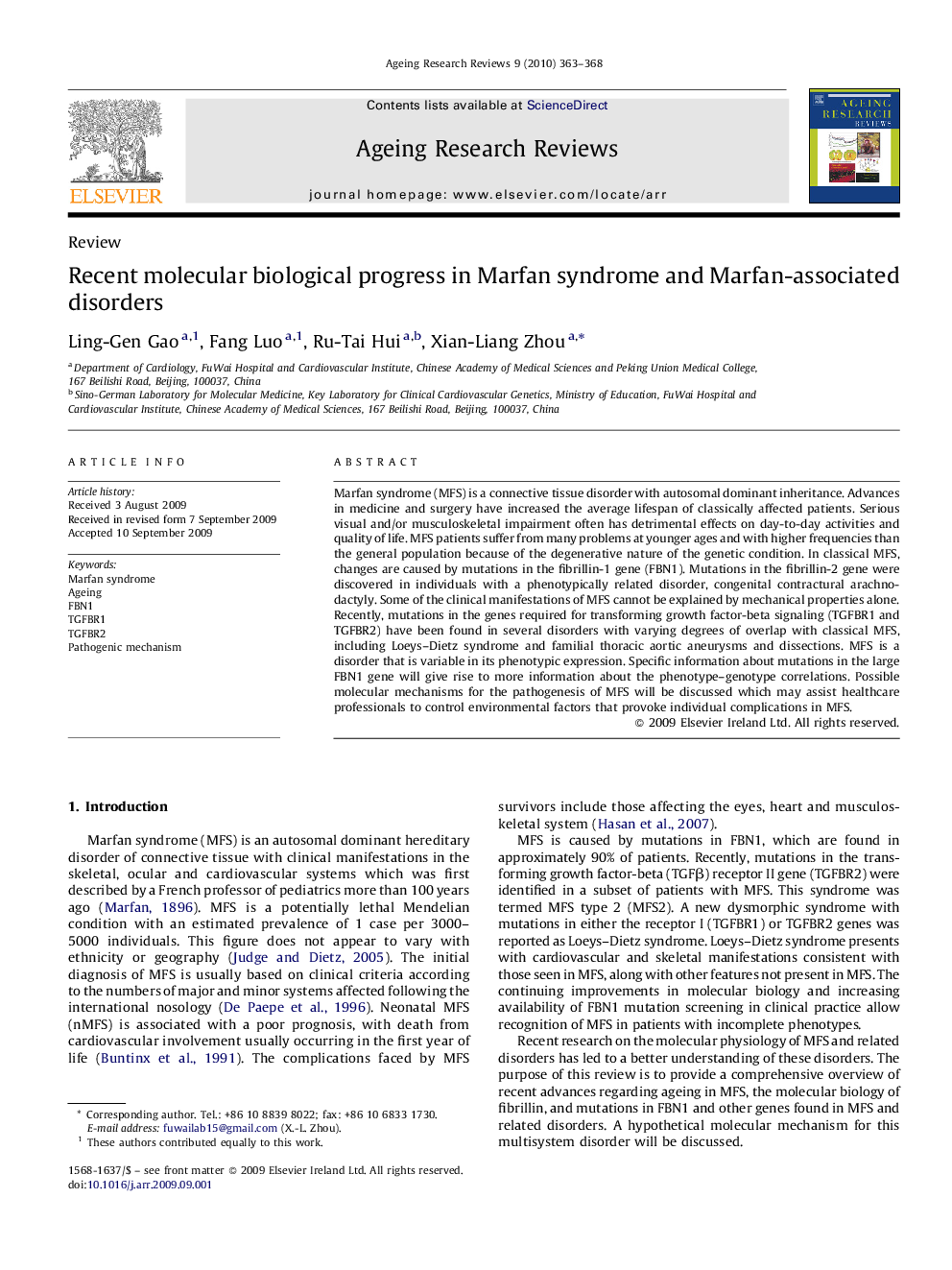| کد مقاله | کد نشریه | سال انتشار | مقاله انگلیسی | نسخه تمام متن |
|---|---|---|---|---|
| 1902437 | 1045745 | 2010 | 6 صفحه PDF | دانلود رایگان |

Marfan syndrome (MFS) is a connective tissue disorder with autosomal dominant inheritance. Advances in medicine and surgery have increased the average lifespan of classically affected patients. Serious visual and/or musculoskeletal impairment often has detrimental effects on day-to-day activities and quality of life. MFS patients suffer from many problems at younger ages and with higher frequencies than the general population because of the degenerative nature of the genetic condition. In classical MFS, changes are caused by mutations in the fibrillin-1 gene (FBN1). Mutations in the fibrillin-2 gene were discovered in individuals with a phenotypically related disorder, congenital contractural arachnodactyly. Some of the clinical manifestations of MFS cannot be explained by mechanical properties alone. Recently, mutations in the genes required for transforming growth factor-beta signaling (TGFBR1 and TGFBR2) have been found in several disorders with varying degrees of overlap with classical MFS, including Loeys–Dietz syndrome and familial thoracic aortic aneurysms and dissections. MFS is a disorder that is variable in its phenotypic expression. Specific information about mutations in the large FBN1 gene will give rise to more information about the phenotype–genotype correlations. Possible molecular mechanisms for the pathogenesis of MFS will be discussed which may assist healthcare professionals to control environmental factors that provoke individual complications in MFS.
Journal: Ageing Research Reviews - Volume 9, Issue 3, July 2010, Pages 363–368